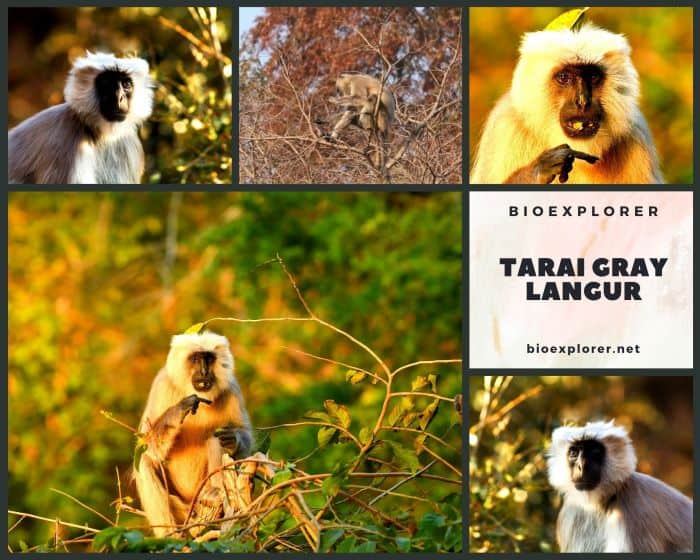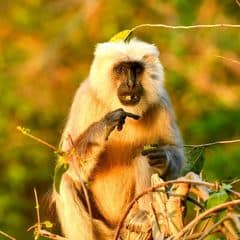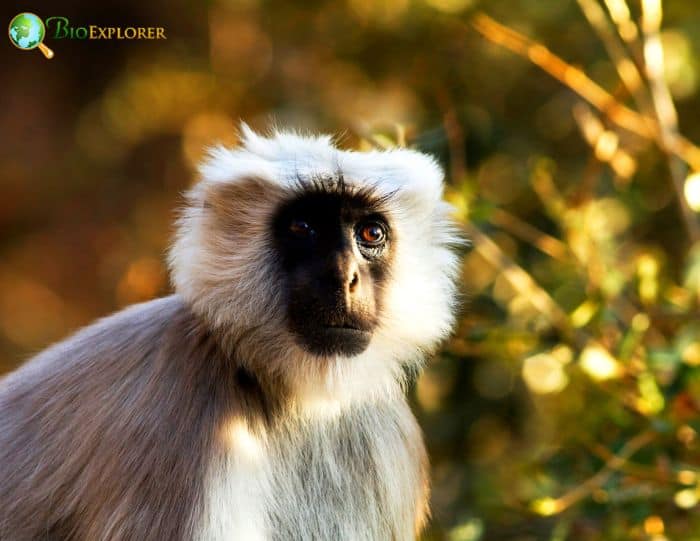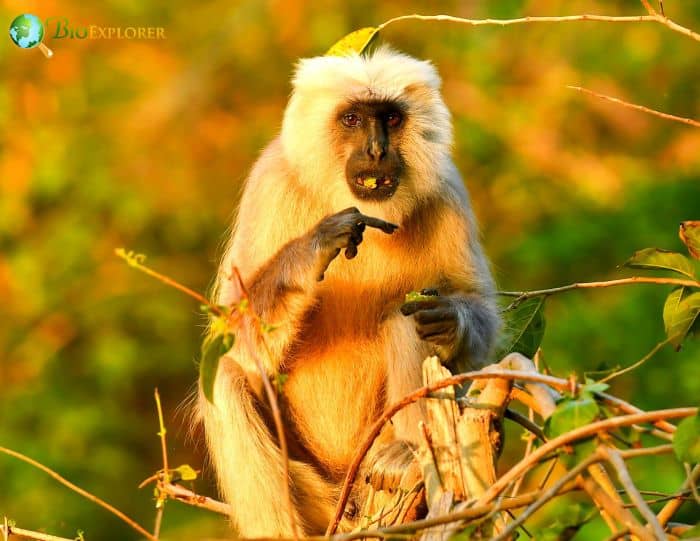
| Animalia | Primates | Cercopithecidae | Semnopithecus | Semnopithecus hector |


- Common Name: Tarai Gray Langur
- Taxonomy Classification Year: 1928
- Monkey Size: 51 to 79 cm (20 to 31 in)
- Skin Color(s): Grayish-brown
- Habitat: Forest, rainforest
- Diet: Omnivorous
- Native Countries: India, Bhutan, Nepal
Tarai Gray Langur Distribution
Tarai Gray Langur Characteristics

The Tarai gray langur[1] (Semnopithecus hector) is an Old-World monkey and was once thought to be a subspecies of the northern plains gray langur.
- The Tarai gray langur is endemic to northern India, Nepal, and Bhutan and inhabits the foothills of the Himalayas from Rajaji National Park to southwest Bhutan.
- Tarai gray langurs have a soft light gray-brown coat all over their body and fairly uniformly colored limbs, while other gray langurs have black hands and feet.
- Unlike other langur species, Tarai gray langurs do not have a crest on their head. Instead, the hair around their face is mainly white and fluffy.
- They have bare, dark-colored faces, ears and toes, and long, thin tails.
- Their eyes are round and brown, set in a face that appears to be a permanent stare with a protruding snout and sunken cheeks. They have often seen with their limbs flexed as they rest in the treetops.
Tarai Gray Langur Facts

- Tarai gray langurs are one of several species of gray langurs named after characters in Homer’s ancient Greek epic poem during the Trojan War, the Iliad. The Latin name for Tarai gray langurs is inspired by Hector, the prince of Troy.
- These gray langurs are terrestrial, arboreal, and diurnal. They move primarily quadrupedally on the ground and in trees, preferring to run rather than walk.
- Tarai gray langurs live in groups of multiple males and females, although groups of single males also exist.
- They spend the nights in dormant trees that rise an average of 12 meters (39.4 feet) above the ground. Tarai gray langurs generally choose the tallest branches to perch on.
- Gray langurs, of which there are seven (disputed) species, have the widest distribution of collobins. They are found in Pakistan, Bhutan, India, Nepal, China, and Bangladesh.
Suggested Reading: Kinds of Monkeys
Cite This Page
APA7MLA8Chicago
BioExplorer.net. (2025, May 28). Tarai Gray Langur. Bio Explorer. https://www.bioexplorer.net/animals/mammals/monkeys/tarai-gray-langur/.
BioExplorer.net. "Tarai Gray Langur" Bio Explorer, 28 May 2025, https://www.bioexplorer.net/animals/mammals/monkeys/tarai-gray-langur/.
BioExplorer.net. "Tarai Gray Langur" Bio Explorer, May 28 2025. https://www.bioexplorer.net/animals/mammals/monkeys/tarai-gray-langur/.











